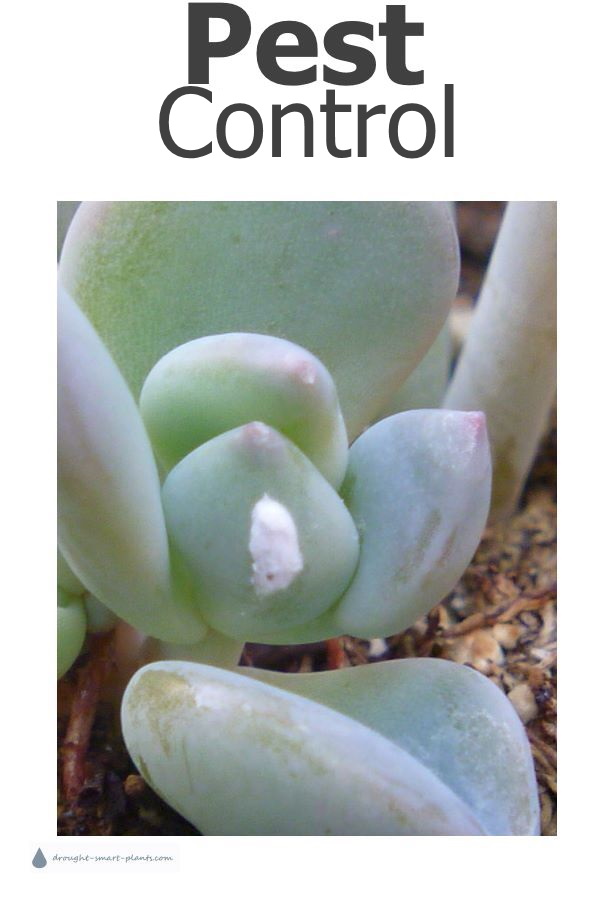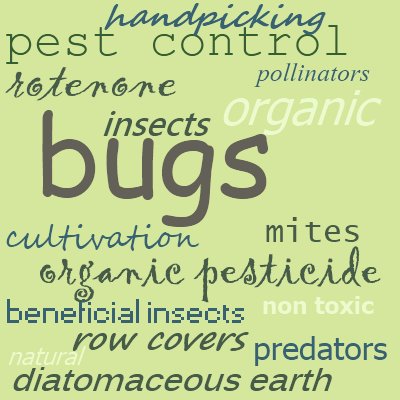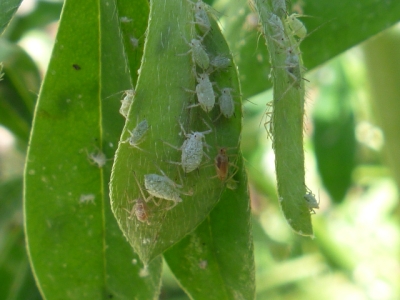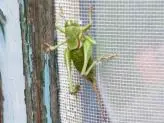Organic and Natural Methods to keep insects at bay
As an Amazon Associate I earn from qualifying purchases.
Other links on this site may lead to other companies that I’m associated with.
Pest control on succulent plants is more difficult than on many other types of plants as their soft tender growth is easily marked or damaged by sprays or picking off the pests by hand.

Prevention of pests in the first place – keeping the plants growing well and happy – will eliminate most insect pest attacks.
See the page on how to grow Echeveria for some insight into the perfect growing conditions for all succulents as well as Echeveria.
Many succulent plants are susceptible to several pests that can do a lot of damage if left untreated.
The sucking of the mouthparts of pests will cause deformed growth which can take several seasons to grow out, so avoiding pests in the first place is the best defense.
There are several viruses that can be spread by insects too.
See more about Sempervivum problems and how to combat them.

Keep your succulents happy and healthy, in the brightest light you have available, and avoid stressors like too cold and too much water, especially during the winter.
A few succulent plant pests that need to be controlled are Mealy Bugs, Aphids, Scale, Whitefly, and Fungus Gnats.
Most of these pests are best controlled before they become an obvious problem so careful inspection of your collection with a magnifying glass if need be, is essential to catch them when they are much easier to deal with.
Spiders help take care of lots of insect pests, before they reach visible proportions.
Pest Control Tip:
Using yellow sticky traps is an old time method of catching pests – be warned, when they say sticky, that means they stick to you too – wet your fingers before handling to prevent it.

Worst times of the season for pests and their spread is when bringing plants inside again after a summer hiatus, or when adding new plants to your collection.
Make sure that you quarantine them and spray each and every one of them at least twice in a 24 hour period to take care of aphid eggs.
If you’ve ever wondered why they’re so hard to get rid of, they have a 23 hour life cycle, which means if you spray once a day at the same time each day, you will miss their most vulnerable time and they have a chance to spread.
A mechanical method of controlling pests is my first line of defense – a jet of water from a seedling nozzle or fine but forceful spray nozzle will knock off aphids and damage their delicate mouthparts – even if they do manage to climb back up to the plant, they won’t be able to do any more damage.
If this method fails, or the infestation seems to be getting worse, I move on to the next level.

I use only organic methods of pest control – I have no desire to contaminate my environment with deadly chemicals.
Control insect pests with a simple soap and oil solution mixed with water.
Shake together a few drops of dish soap (not detergent) or insecticidal soap, a few drops of light cooking oil in a liter of lukewarm water.
Neem oil, light horticultural oil or even light cooking oil such as Canola oil or sunflower oil will work well – thoroughly wash out the spray bottle or sprayer after use as the soap and oil mixture tends to solidify and clog the nozzle.
Spray all surfaces of the plant until the mixture runs off. This spray will work only if it comes in contact with the pest where it works by smothering them.
Plant Pest Tip:
Diatomaceous Earth is a fine powder made from the crushed skeletons of tiny sea creatures; it works by scratching and desiccating the outer skin of pests, killing them. Use it as an all purpose pesticide with no residual effects – although it’s non-toxic, it is a very fine dust, so avoid inhaling it.

Hot Pepper spray is a slightly more involved technique and requires care so as not to get the hot pepper oils on your skin or in your eyes – use rubber gloves when mixing and spraying.
Garlic spray can be made by crushing several garlic cloves, steeping in hot water for a few hours then draining the water off to use as a spray. Add a couple of drops of dish soap to make it stick to the plant.
Test all these sprays on a part of the plant before spraying your whole collection to check for any potential damage it may cause.There are also systemic pesticides that come in granular form. These are sprinkled onto the surface of the soil, and the plant takes them up when you water.
Then the pests get exposed to them as they suck the life out of your plant. Use these with caution, as they are not specifically designed for succulents. More from Amazon on Systemic Pesticides here.
Having a Horticultural Crisis?
The Horticulturist is IN…
Let me answer your question about growing plants, their pests and diseases, or any other plant or garden related issue. Click on the picture of the icky bug.
If you are using beneficial insects as a biological control don’t use any sprays – they will kill off predatory beneficial insects just as effectively as the pests.
Many beneficial insects can be shipped by mail as egg cases which can be placed in a warm environment around the plants to hatch out.
They depend on a large population of pests to survive, so monitoring the pests with sticky traps and introducing the beneficial insects at the right time is important.
For succulents planted outside, your backyard chickens will take care of many pests – be warned that they like the nice juicy leaves of many succulent plants too!
If you have trouble with larger pests like deer, they take a bit of deliberate planning to deter.
You might like these
Succulent Plant Pests – a resource to manage insects, pests and diseases…
Garden Pests can be tiny, microscopic bacteria, or enormous four legged critters; they all like to munch on your plants while your back is turned…
How to prevent bambi damage – Succulents and Deer…


